|
|
Updated as per http://biological-diversity.info/sphingidae.htm (Belize), November 2007
Updated as per Fauna Entomologica De Nicarauga, November 2007
Updated as per The Known Sphingidae of Costa Rica, November 2007
Updated as per Erin Brandt images (Cristalino, Mato Grosso, Brazil), March 2008
Updated as per personal communication with Vladimir Izersky, (Coviriali and Rio Venado, Junin, Peru, September, November, December), December 2008
Updated as per personal communication with Kirby Wolfe (Santa Rosa, San Jose, Costa Rica), January 2009
Updated as per personal communication with Jose Monzon (Guatemala); May 2009
Updated as per More, Kitching and Cocucci's Hawkmoths of Argentina 2005, December 2009
Updated as per
AN ANNOTATED CHECKLIST OF THE SPHINGIDAE OF BOLIVIA, December 2009
Updated as per Sphingidae (Lepidoptera) de Venezuela, Compilado por: María Esperanza Chacín; December 2009
Updated as per personal communication with Humberto Calero Mejia (87mm, Isla Gorgona, Cauca, Colombia, June 3, 2011; 0m); December 17, 2011
Updated as per personal communication with Sergio D. Ríos Díaz in CATÁLOGO DE LOS SPHINGIDAE (INSECTA: LEPIDOPTERA) DEPOSITADOS EN
EL MUSEO NACIONAL DE HISTORIA NATURAL DEL PARAGUAY; sent to me in July 2014 by Sergio D. Ríos Díaz.
Updated as per personal communication with Ezequiel Bustos (Shilap revta. lepid. 43 (172) diciembre, 2015, 615-631 eISSN 2340-4078 ISSN 0300-5267), January 4, 2016
Updated as per personal communication with Diogo Luiz (Buzios, Rio de Janeiro, Brazil, November 13, 2016); November 14, 2016
Updated as per personal communication with Rosangela Descry (Porto Velho, Rondonia, Brazil, July 8 2016); November 14, 2016
|
Callionima nomius
Fan-tailed Bark Moth
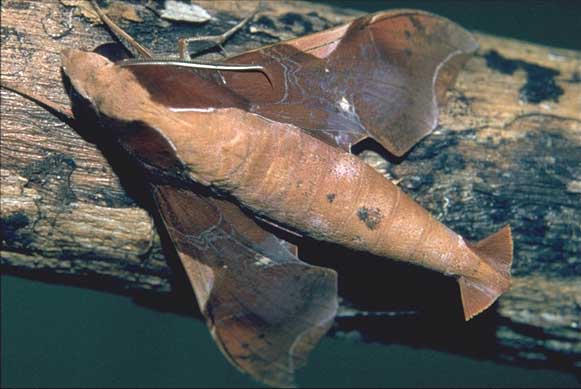
Callionima nomius courtesy of Dr. Lloyd Glenn Ingles.
This site has been created by
Bill Oehlke at oehlkew@islandtelecom.com
Comments, suggestions and/or additional information are welcomed by Bill.
TAXONOMY:
Family: Sphingidae, Latreille, 1802
Subfamily: Macroglossinae, Harris, 1839
Tribe: Dilophonotini, Burmeister, 1878
Genus: Callionima Lucas, 1857 ...........
Species: nomius Walker, 1856
|
DISTRIBUTION:
The Fan-tailed Bark Moth, Callionima nomius (Wingspan: 70 - 87mm (HCM)),
flies in
Mexico;
Belize: Cayo, Stann Creek;
Guatemala;
Honduras ??;
Nicaragua: Rio San Juan;
Costa Rica: Puntarenas, Guanacaste, Alajuela,
Heredia, San Jose;
Panama; through
Colombia: Cauca: Isla Gorgona (HCM);
northwestern and eastern Venezuela: Aragua, Bolivar, Carabobo, Distrito Federal, Lara, Tachira;
Peru: Junin;
Bolivia: La Paz (750m), Santa Cruz;
Paraguay: Amambay; Canindeyu;
Argentina: Misiones (158m);
to
southern Brazil: Roraima; Rondonia: Port Velho (RD); Para; Mato Grosso:
Cristalino Jungle Lodge; Rio de Janeiro: Buzios (DL). Brazil is the specimen type locality.
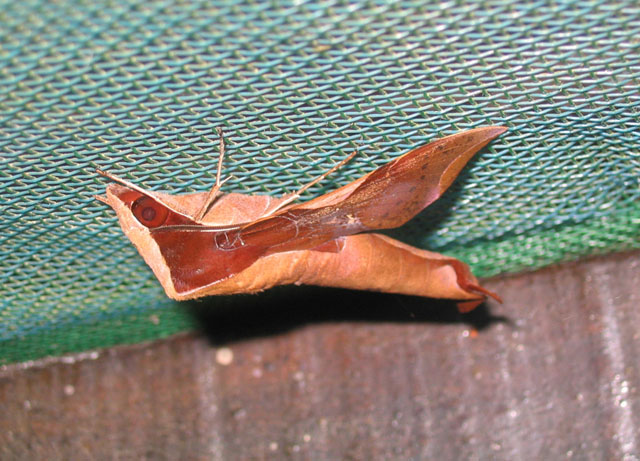
Callionima nomius Cristalino Jungle Lodge, Mato Grosso, Brazil,
courtesy of Erin Brandt.
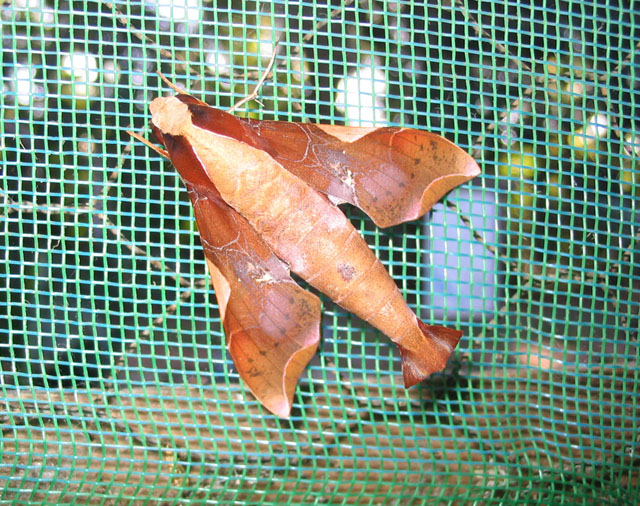
Callionima nomius Cristalino Jungle Lodge, Mato Grosso, Brazil,
courtesy of Erin Brandt.
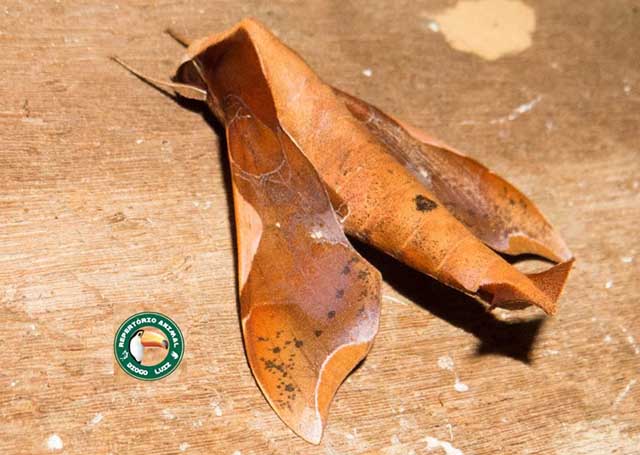
Callionima nomius Buzios, Rio de Janeiro, Brazil,
November 13, 2016, courtesy of Diogo Luiz.
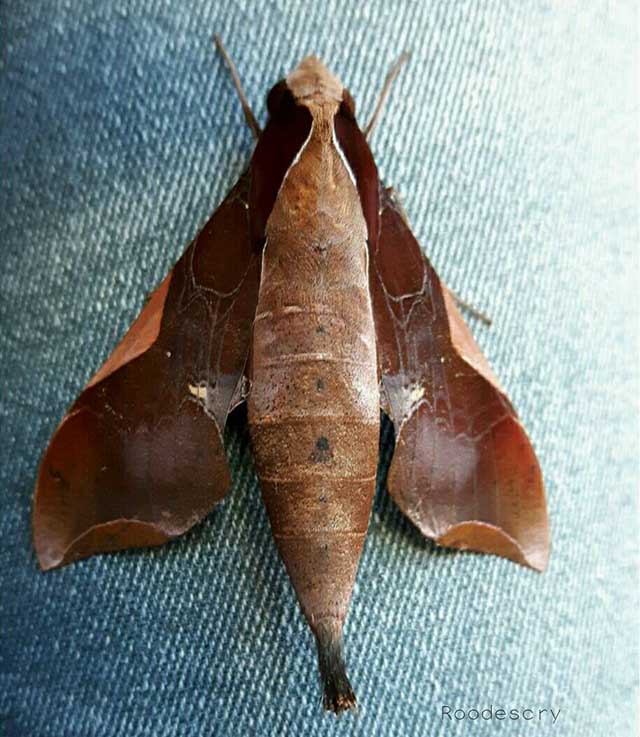
Callionima nomius Porto Velho, Rondonia, Brazil,
July 8, 2016, courtesy of Rosangela Descry.
FLIGHT TIMES:
Callionima nomius adults fly continuously and specimens have been taken
in every month (except perhaps March) in Costa Rica.
Humberto Calero Mejia reports a June 3, 2011, flight of Callionima nomius (recto and verso) on Isla Gorgona,
Cauca, Colombia. Diogo Luiz reports a November flight in Buzios, Rio de Janeiro, Brazil. Rosangela Descry reports a July flight in Porto Velho, Rondonia, Brazil.
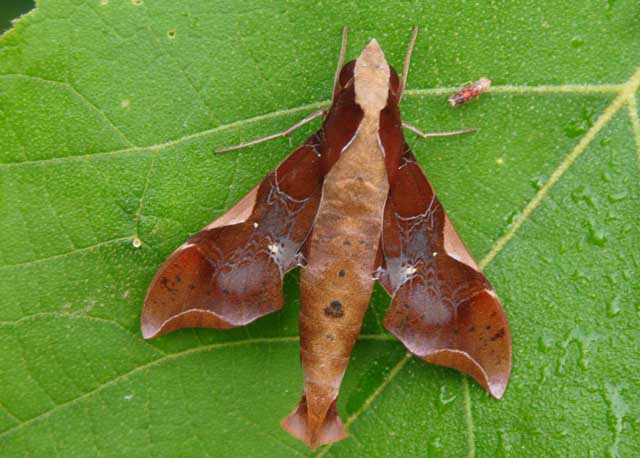
Callionima nomius, Santa Rosa, San Jose, Costa Rica, November, 2008, courtesy of Kirby Wolfe.
ECLOSION:
Adults eclose from pupae formed in flimsy cocoons among leaf litter.
Females are generally
active from 10:00 pm until 2:00 am, while males are on the wing from 11:00 pm until 2:30 am.
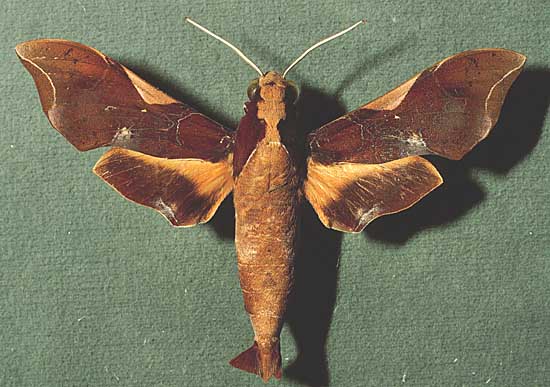
Callionima nomius male courtesy of Dan Janzen.
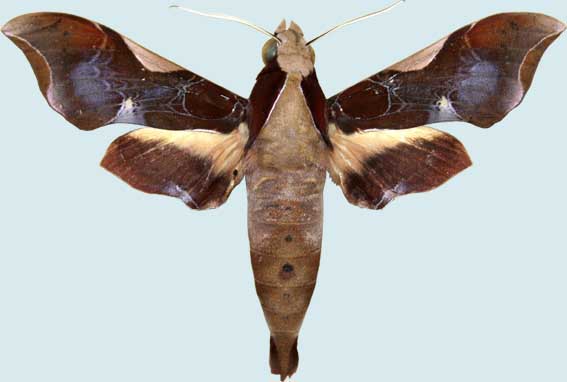
Callionima nomius male, Rio Venado, Junin, Peru,
December 6, 2008, 1050m, courtesy of Vladimir Izersky.
SCENTING AND MATING:
Females call in the males with a pheromone released from a gland at the tip of the
abdomen. Both males and females nectar at flowers, including Nicotiana forgetiana. Females are seldom taken at lights while males are common.
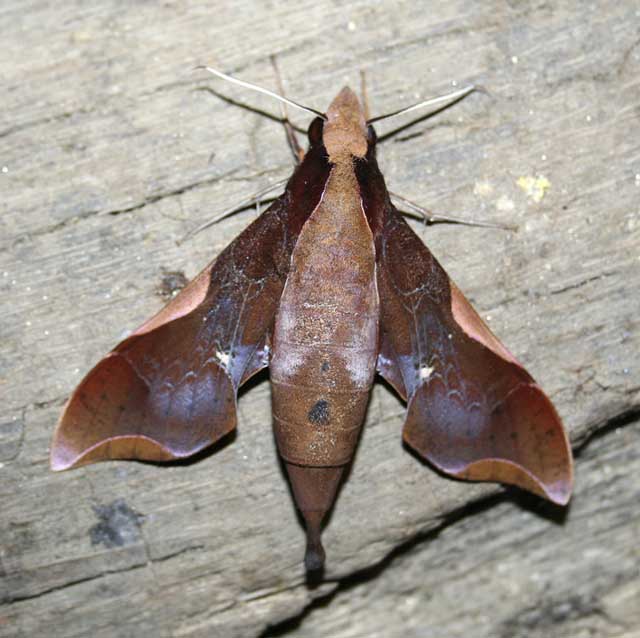
Callionima nomius female, Covirialio, Junin, Peru,
November 1, 2008, 662m, courtesy of Vladimir Izersky.
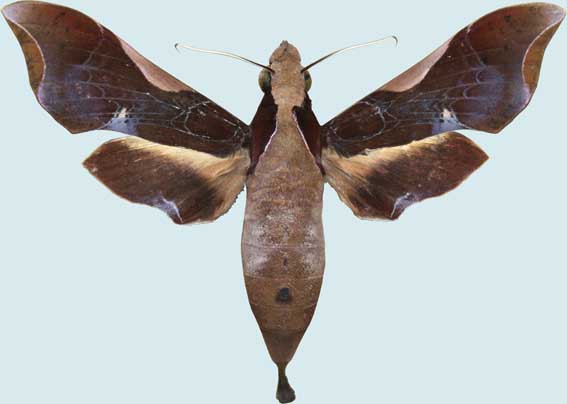
Callionima nomius female, Covirialio, Junin, Peru,
September 21, 2008, 662m, courtesy of Vladimir Izersky.
EGGS, LARVAE, PUPAE:
Larvae probably feed on members of the Apocynaceae (Dogbane) family: Aspidosperma macrocarpa .
Return to Sphingidae Index
Return to Dilophonotini Tribe
Use your browser "Back" button to return to the previous page.
This page is brought to you by Bill Oehlke and the
WLSS. Pages are on space rented from Bizland. If you would like to become a "Patron of the Sphingidae Site", contact Bill.
Please send sightings/images to Bill. I will do my best to respond to requests for identification help.
Enjoy one of nature's wonderments: Live Saturniidae (Giant Silkmoth) cocoons.
 | 
Show appreciation for this site by clicking on flashing butterfly to the left.
The link will take you to a page with links to many insect sites. |
|











